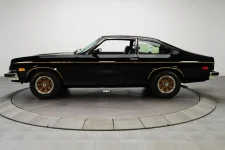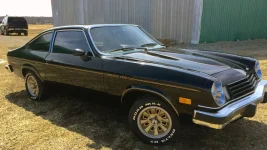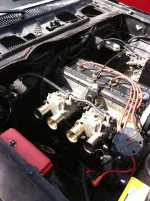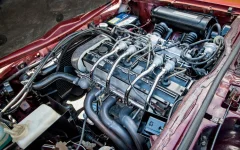Good looking engine. Surprise for me as I didn'think GM could make a good 4 cylinder engine.
Was this mostly highway miles or stop and go commuter service??
My 2¢
Looks not very far from brand new.
G.M. did not even come close at one time. Years ago their 4 cyl engined cars were knicknamed "
throw-away-cars!" They were really so very bad they were a complete horror show. Many failed
(meltdowns) before they were even paid off by the poor buyers who trusted and took chances with Chevrolet.
Chevrolet , they actually got lucky and made a pretty good one in partnership with an English firm while John Delorean was running some parts of GM again. The Cosworth Vega twin-cam fuelie was quite the handfull in the small package body it was installed into. Problem was they cost a lot and consumers lost faith too quickly while GM was working out some (first year) bugs that always happens.
It appeared
the General had finally found & hired some folks with experience with the very small cui motors , some in aluminum.
The Chevrolet Cosworth Vega was a four-passenger automobile produced for the 1975 and 1976 model years. It is a limited-production version of the Chevy-Vega subcompact with higher performance designs. Chevrolet developed the car's
all-aluminum in-line 122 cu in (1,999 cc) engine, and British company Cosworth Engineering designed the DOHC cylinder head. 5,000 engines were built. About 3,500 cars were made before being given up on. They were priced nearly double that of a base Vega and only $900 below the 1975 Chevrolet Corvette.[1]
The Cosworth Vega Twin-Cam engine is a 122 cu in (1,999 cc) inline-four with die-cast aluminum alloy cylinder block and Type 356 aluminum alloy, 16-valve cylinder head with double overhead camshafts (DOHC) held in a removable cam-carrier that doubles as a guide for the valve lifters. Each camshaft has five bearings and is turned by individual cam gears on the front end. The camshafts, water pump and fan are driven by a fiberglass cord-reinforced neoprene rubber belt, much like the Vega 140 cu in (2,294 cc) engine. The cylinder head has sintered iron valve seats and cast iron valve seats. Race-bred forged aluminum pistons with heat-treated forged steel crankshaft and connecting rods enhance durability.[6]
The engine has a stainless steel exhaust header and Bendix electronic fuel injection (EFI), with four injector valves, an electronic control unit (ECU), five independent sensors and two fuel pumps. Some 60 lb (27 kg) lighter than the SOHC Vega engine,[4] it develops maximum power at 5,600 rpm and is redlined at 6,500 rpm, whereas the SOHC Vega engine peaks at 4,400 rpm and runs to 5,000 rpm. Final ratings are 110 hp (82 kW) at 5,600 rpm, 107 lb⋅ft (145 N⋅m) of torque at 4,800 rpm.[7] 3,508 of the 5,000 engines were used. GM disassembled about 500 and scrapped the remainder.[8] These cars are very rare today with some in amazingly complete operating condition and are sought out by collectors heavily. They are very fast small cars with great suspension and handling and said were ahead of their time when originally released to the general public.





